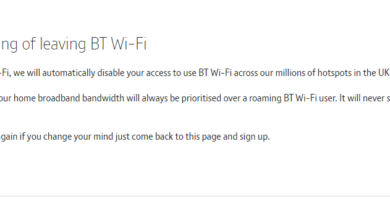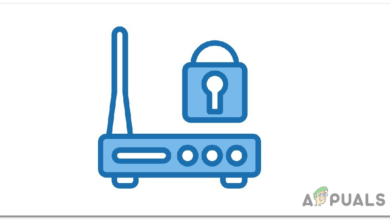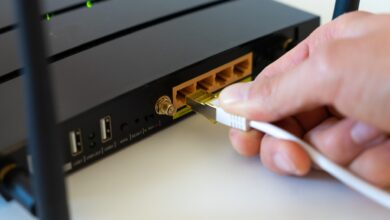Xfinity TV and Internet Stopped Working – Troubleshooting Guide
If you’re an Xfinity cable TV or Internet user, this is most likely not the first time your equipment has malfunctioned. Xfinity TV and Internet outages typically occur when the entire Comcast network goes down, but this issue might also be client sided.
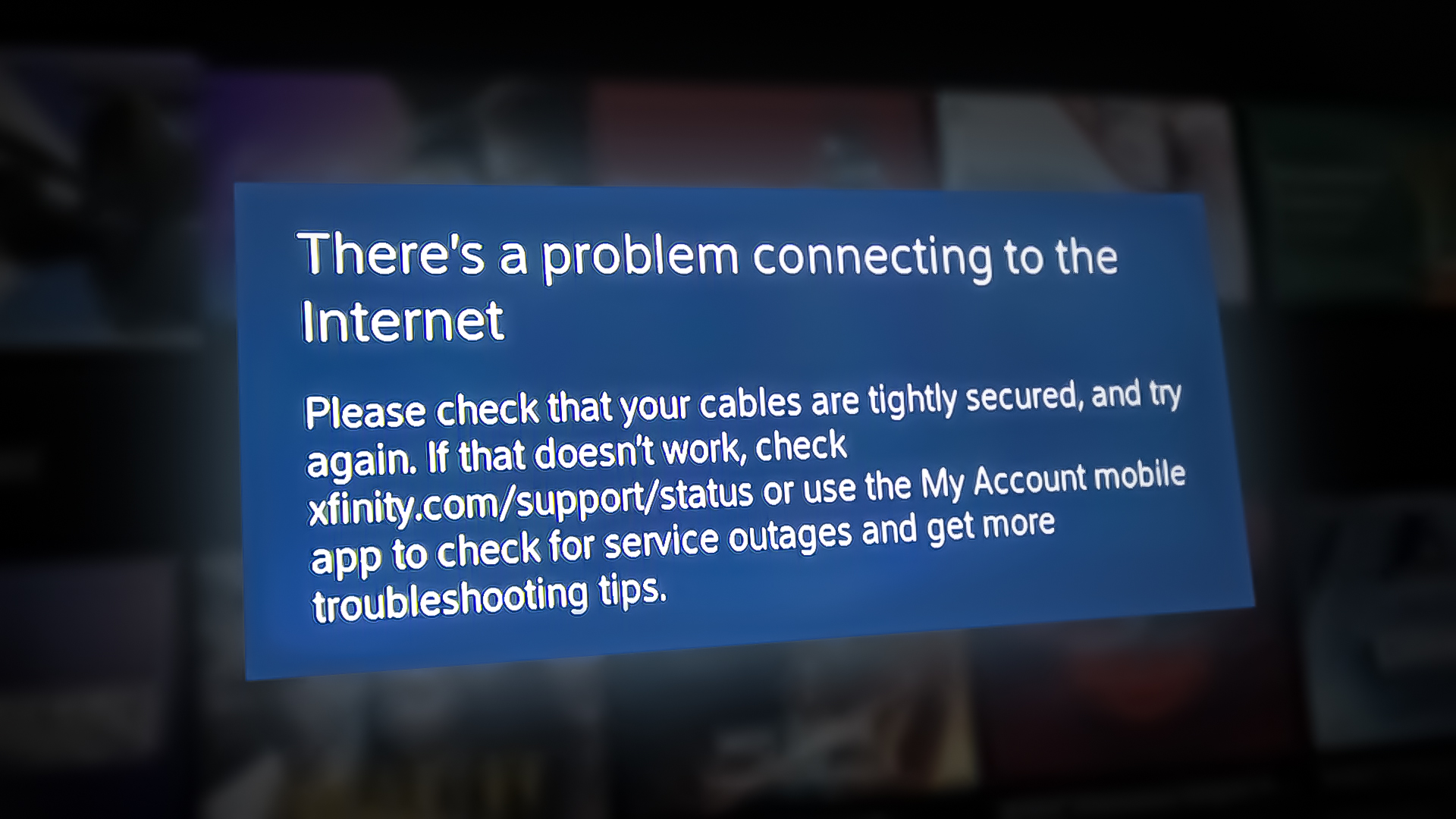
Before you get in touch with an Xfinity customer service agent, there are a few troubleshooting steps you can perform yourself.
1. Check for Network Outages
If you’ve used Xfinity for a while and your box never struggled to hold the signal before you started to experience this issue, the first thing you need to do is investigate whether this problem is actually due to a wider network issue.
Typically, two surefire signs that the Xfinity connection is affected by an outage are a buffering connection or an intermittent connection that is constantly losing its signal.
Fortunately, Xfinity maintains a status page with local outages. Consult it to figure out if your area is affected.
Once you’re on the main status page, scroll all the way down to the bottom of the page and click on Check for Local Outages.
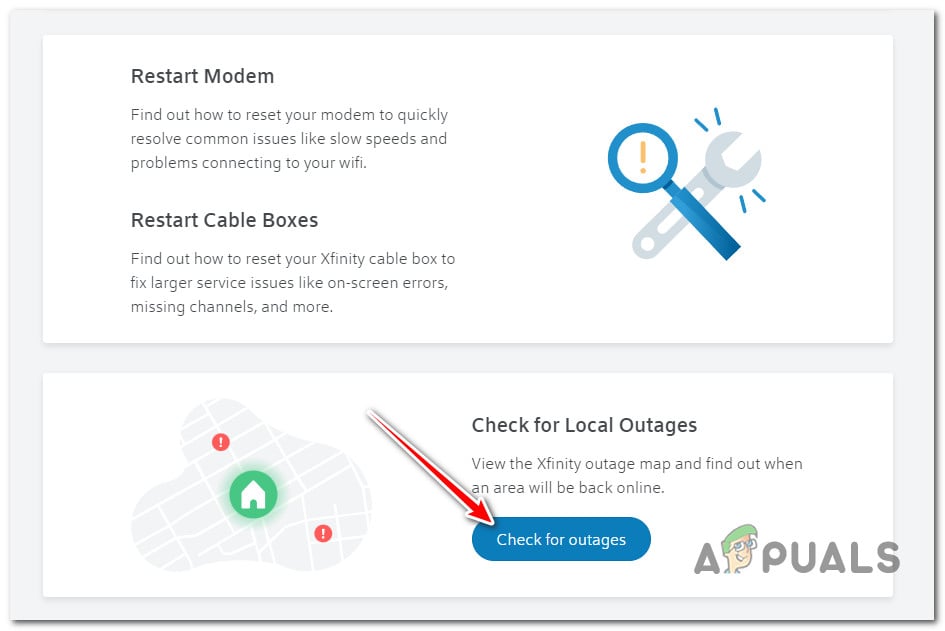
When you see the Outage map, type in the service address and see if Infinity currently reports network issues in your area.
Unfortunately, a lot of Infinity customers have reported that this map is not always reliable. Just because the official status map doesn’t report an issue, that doesn’t mean the issue is not infrastructure-based.
Our recommendation is to also use a 3rd party service like DownDetector or IsItDownRightNow to work out if other users in your area are also experiencing this issue at the same time as you.

Note: Scroll down the status report page and check the outage graph before reading the latest social media reports about this issue, to see if other users in your area are currently experiencing the same kind of problem.
Typically when there’s a big outage that affects lots of users, Xfinity makes an official announcement on their official Twitter support account. Check out the latest tweets and see if you find any confirmation.
If other users in your area are experiencing the same kind of issues and you’ve been able to confirm an outage that affects your area, there’s nothing else you can really do other than wait for the problem to be fixed.
On the other hand, if you’ve found no evidence of an outage, continue with the next steps outlined in this article for a few ways of troubleshooting the connection locally.
2. Perform a full network test (if applicable)
If you are currently renting an xFi Gateway and you’re experiencing issues with your Internet connection, the first thing you should do is perform a full network test using the Xfinity app.
Note: The Xfinity app will allow you to easily scan your home network health and troubleshoot the vast majority of connectivity issues that might be responsible for the signal loss. This scan will investigate the speed and reliability of the Internet connection as well as analyze the network between the xFi Gateway and all of your connected devices.
Here’s a quick guide on how to perform this test and interpret the readings to see whether they show healthy transfer speeds:
- Start by ensuring that the Xfinity app is installed on one of the mobile devices connected to your home network. You can either download the Apple App store or Google Play store versions of the Xfinity app.
- Open the Xfinity app and tap on Connect.
- From the main menu, you should see the Test your internet tile. Tap on the Run a test button.
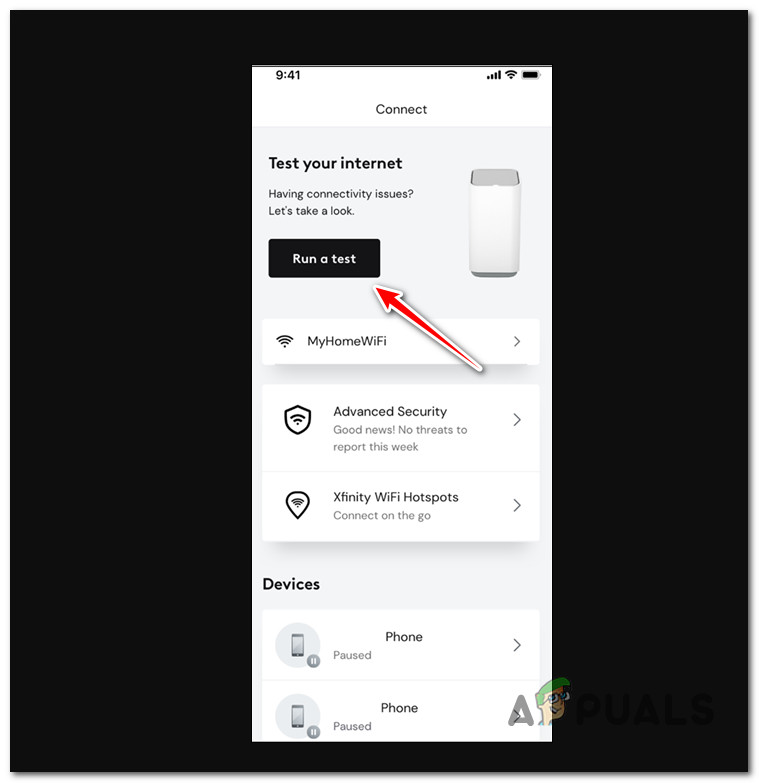
Running a test on the Xfinity app Note: If the Test your internet tile is not visible on the home page, go to Connect > Internet Health, then tap on the Run a test hyperlink (under Full Network Test).
- Wait until the network test is complete. The utility will begin by checking any server outages and move towards investigating your local gateway if no outage issues are found.
The results of this investigation will be represented in percentages based on your current plan speed:
- If your results are 90% higher than the speeds allocated to your internet plan, your connection is functioning properly.
- If your results are lower than 90% of the speeds allocated to your internet plan, the app will likely provide you with two options:
- Restart Gateway: If the investigation revealed that there’s no underlying issue with the gateway as it’s fully compatible with your current Internet plan, the recommended solution would be to restart the gateway. If you do this, the test will run again automatically after the next restart. In case the speeds are still below the threshold after the second test, you will be prompted to schedule a technician appointment.
- Gateway Upgrade: You’ll see this option if the current hardware (your gateway) is not able to match the Internet plan that you’re currently subscribed to. In this case, Xfinity will provide you with a new one for free.
Important: If both test results meet the threshold, the app will automatically start testing all your device connections. At the end of this process, you’ll get an overview of each connected device (as long as they are not currently in power-saving mode).
3. Restart the approved modem
In case you don’t use the ISP-provided modem and you used an approved device that’s compatible, try restarting it using the dedicated button.
With most approved modems, a short press of the restart button is enough to fix any inconsistencies caused by accumulated cached data. Additionally, you can initiate the restart via the Xfinity My Account app.
Important: Do not confuse the restart button with the reset button. The restart button is usually on the top side of the equipment while the reset button is all the way back. Typically, you’ll need a sharp pointy object to reach the reset button. Avoid going for the reset procedure as it will make your equipment ‘forget’ the connection with Xfinity network.

4. Get in touch with Xfinity support
If you haven’t found any evidence of an outage and you still can’t get a stable Xfinity connection even after following all the troubleshooting steps above, the only thing left to do is to get in contact with a representative.
If you want to go for the call option, our advice is to use the callback service as the waiting list is notoriously long for phone calls with Xfinity support agents. Schedule a call-back and wait until a representative gets in contact with you.
In case you’re in a hurry, the in-person chat support is also usually way faster.



